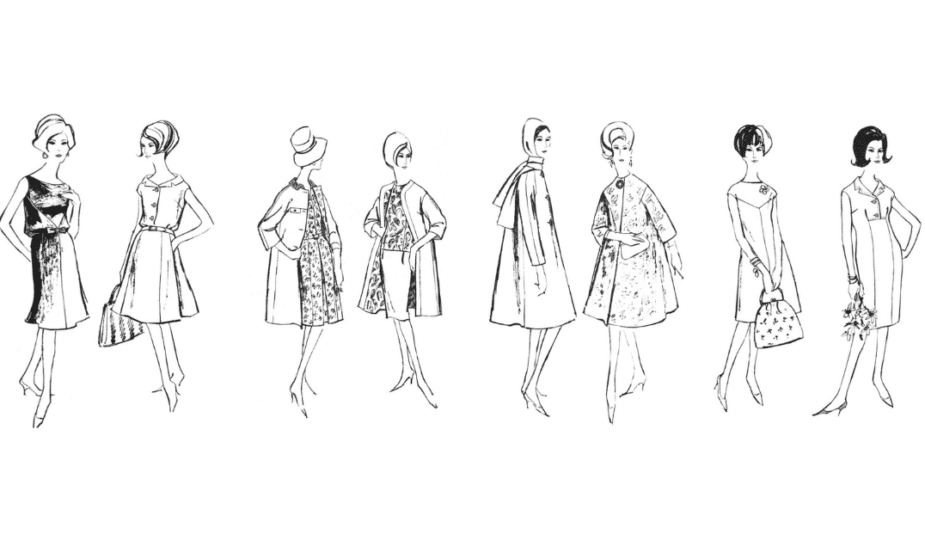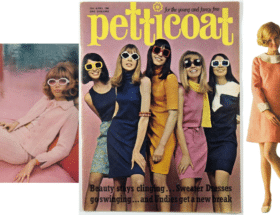By Pauline Weston Thomas for Fashion-Era.com
- The Early 60s Silhouette - 1962
- Colouring In Fashion Drawings 1962 Images
- Fashion Sewing in the 1960s
The Early 60s Silhouette - 1962
1960s Fashion History can be traced very accurately by looking at old sewing patterns. These illustrations were some I had torn from an old sewing pattern book, decades ago and kept as reference. 1962 was scribbled on the original pages and they are so typical of early 1960s clothes. All the images below will expand to fit an A4 sheet when printed out.
These images are ideal for colouring in. Or use them as inspiration for fashion designing and pattern cutting with an early 1960s feel. Those unschooled in 1960s fashion history often wrongly assume that all 1960s fashion was extremely short. The mini skirt length was not really a mass fashion until the mid 1960s. Skirt lengths had gradually become shorter at the end of the 1950s.
By the early sixties skirt lengths were as you can see just on, or just skimming the knee. Many people think that this is the perfect length for a dress as any style that ends on a body joint has a natural look that helps the body seems well-balanced.
Slim-line sheaths or tubular dresses gave way to flared skirts. Here you can see the tentative beginning of the A-line skirt, that, in its many varying lengths, from maxi to mini, would remain popular for about 15 years until 1979. The image of the clothes the two girls wear is quite innovative for the time frame. They marry two eras. The little girl wearing the full dress looks like her dress could have sat happily in the 1950s, whilst the coat has an early Jackie Kennedy feel to it. That coat style looks much like styles of coats worn by adults after 1964.
1960s Fashion History Colouring In Line Drawings - 1962
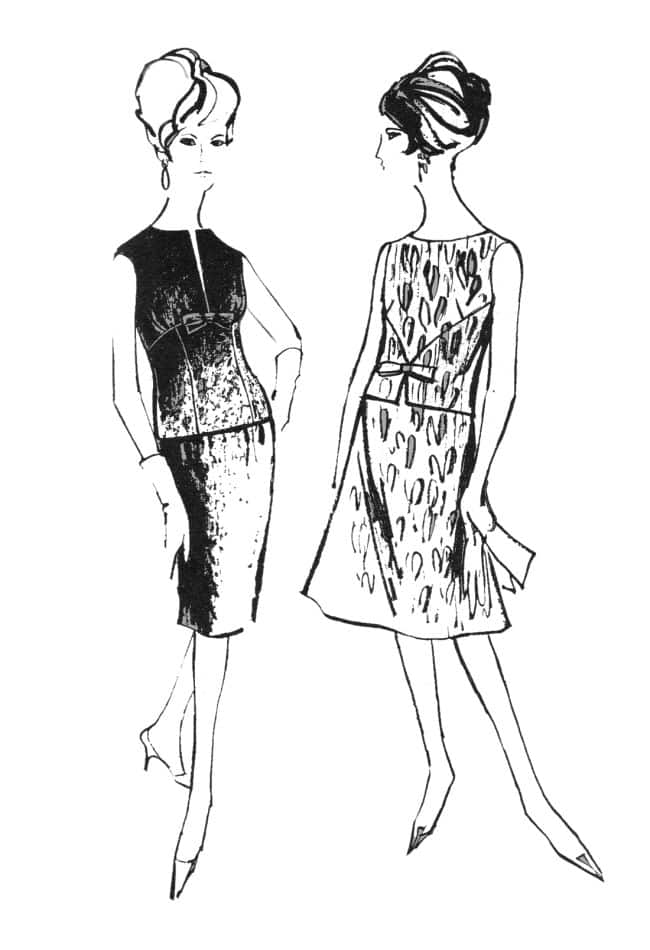
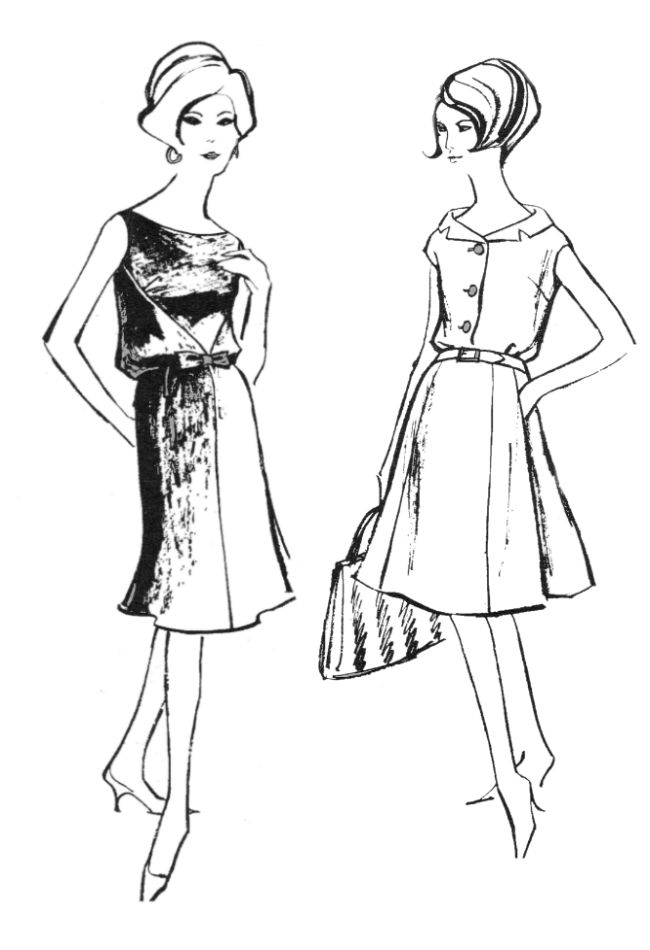
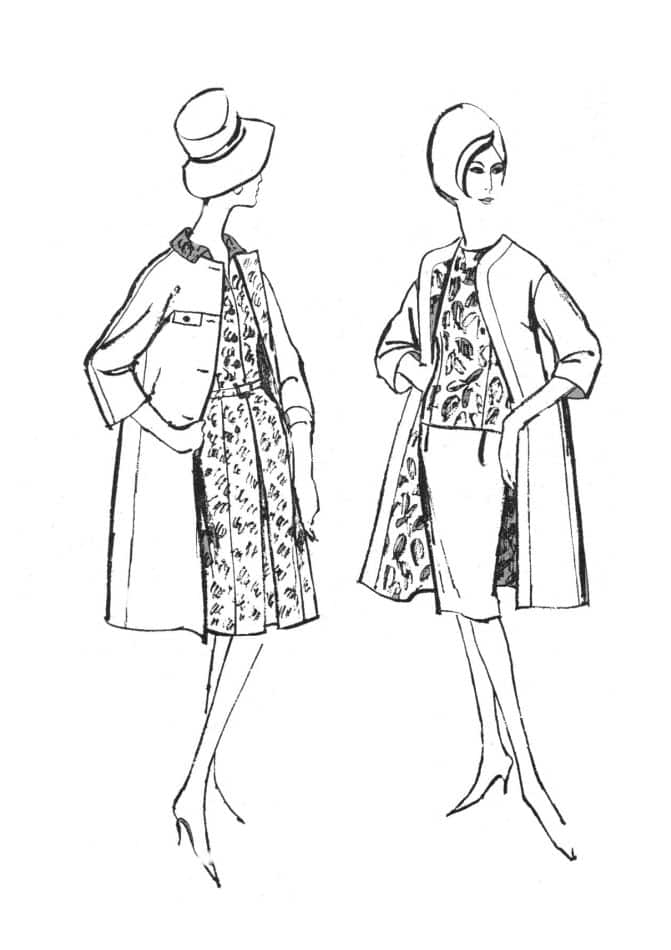
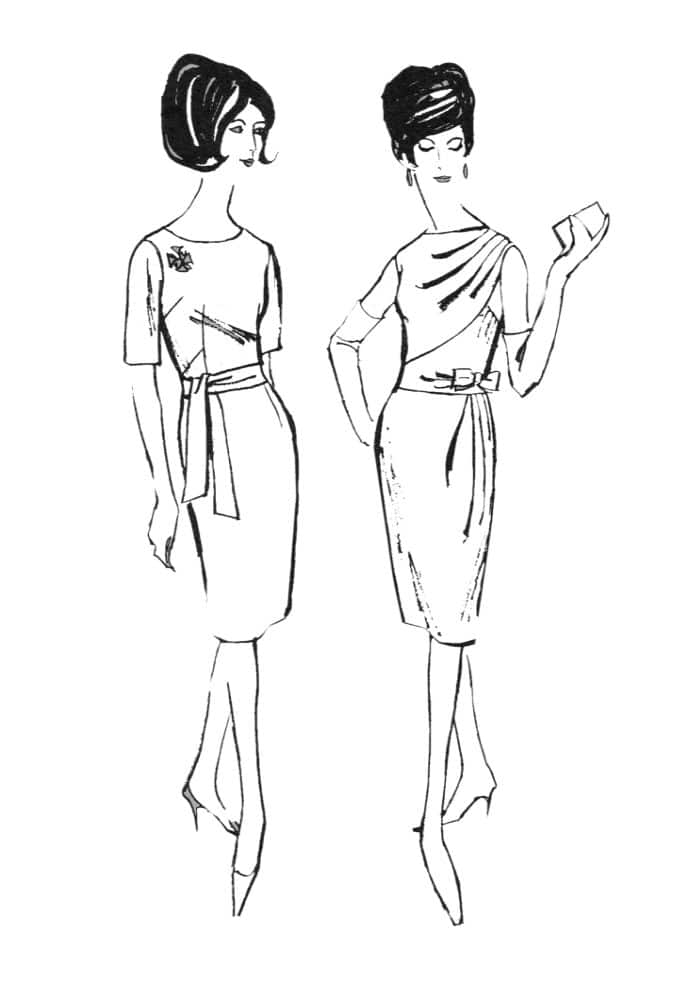
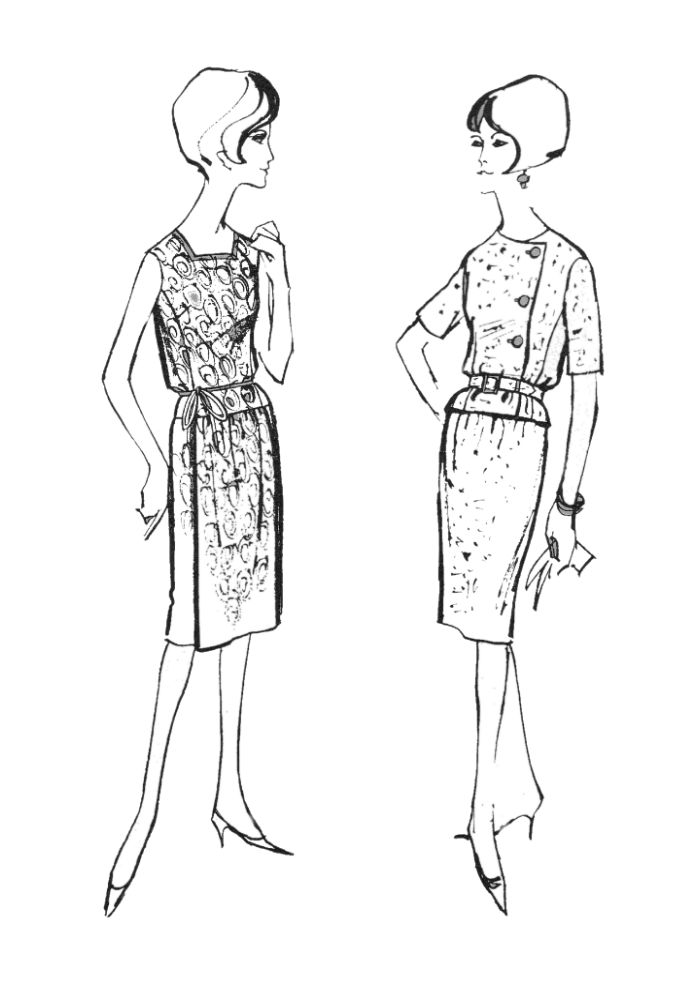
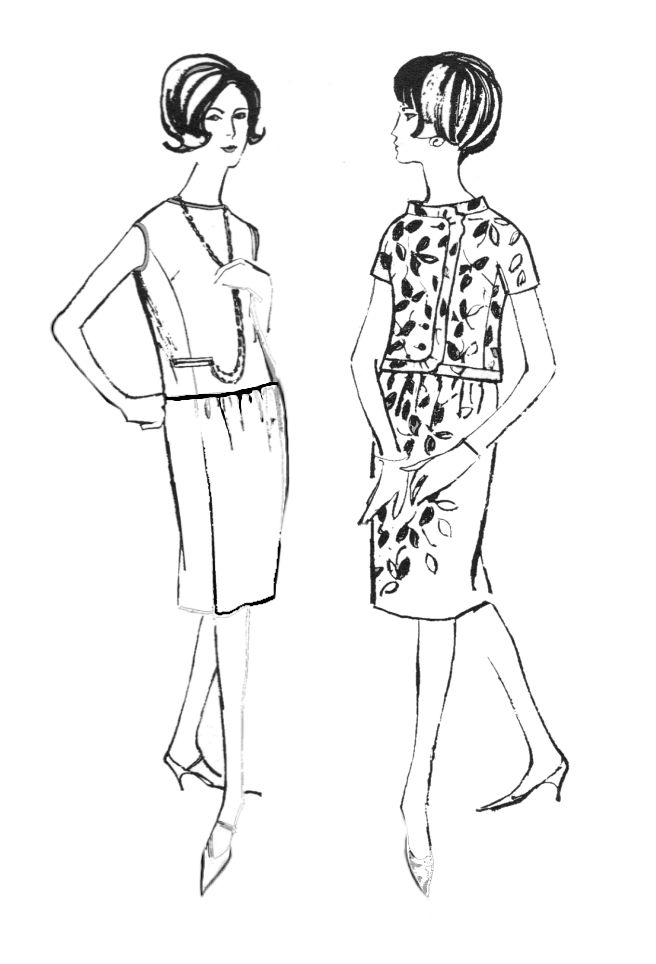
1962 - Slimline sheath, Empire line dresses, overblouse styles of the early 1960s. Jewellery brooches and decorative buttons were used to highlight the elegance of a dress or jacket.
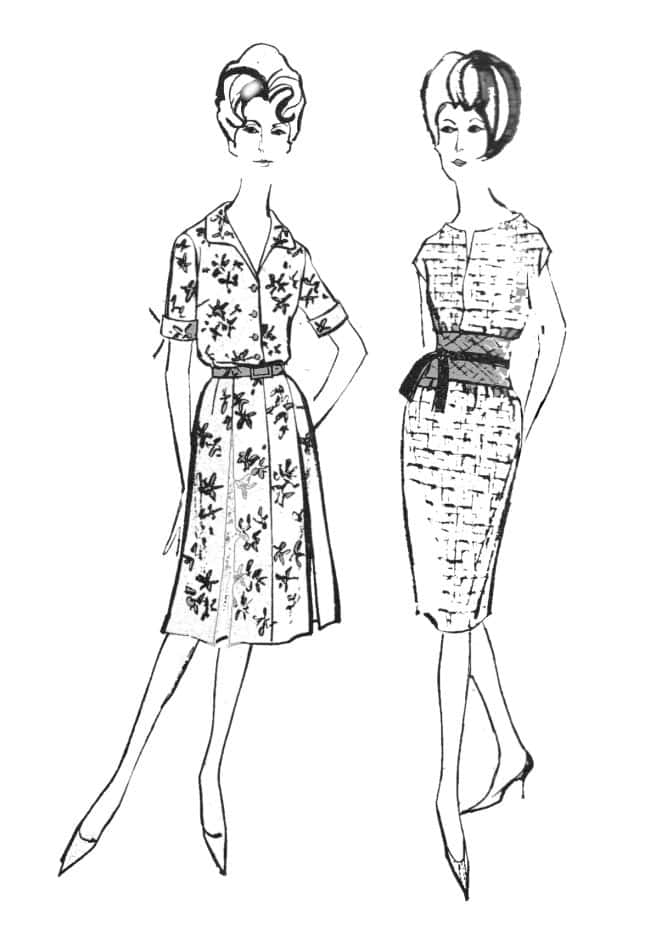
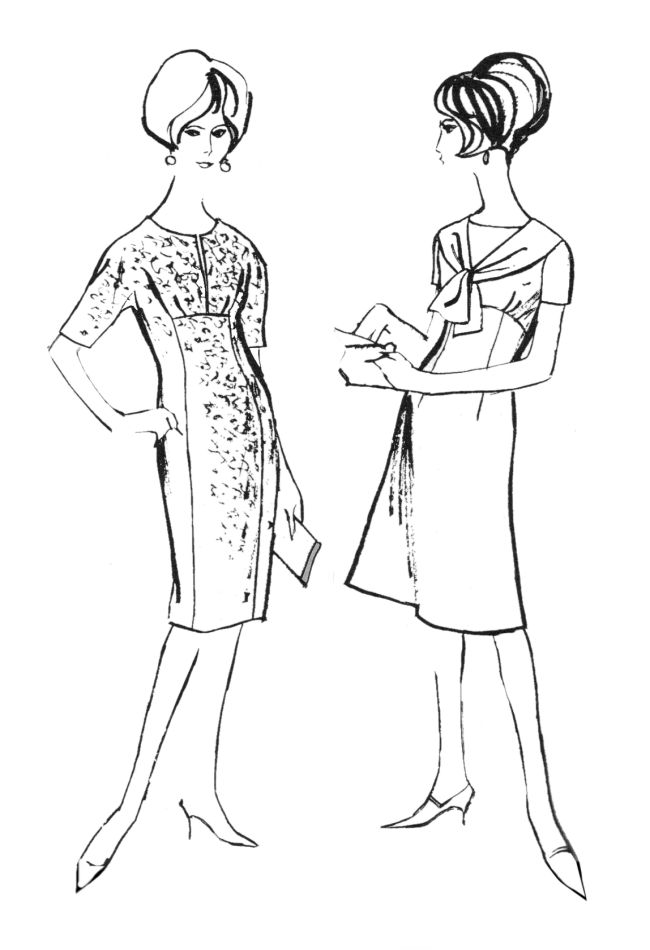

1962 Dresses were worn with contrast edge-to-edge duster coats. Semi-fitted dresses with wide set necklines were a feature of 1960s clothes, as were two-piece outfits of overblouse and skirts of several styles, including pleated skirts on a hip Basque. The overblouses were often straight, but could also be similar to fitted scoop neck shell tops of the 1990s.
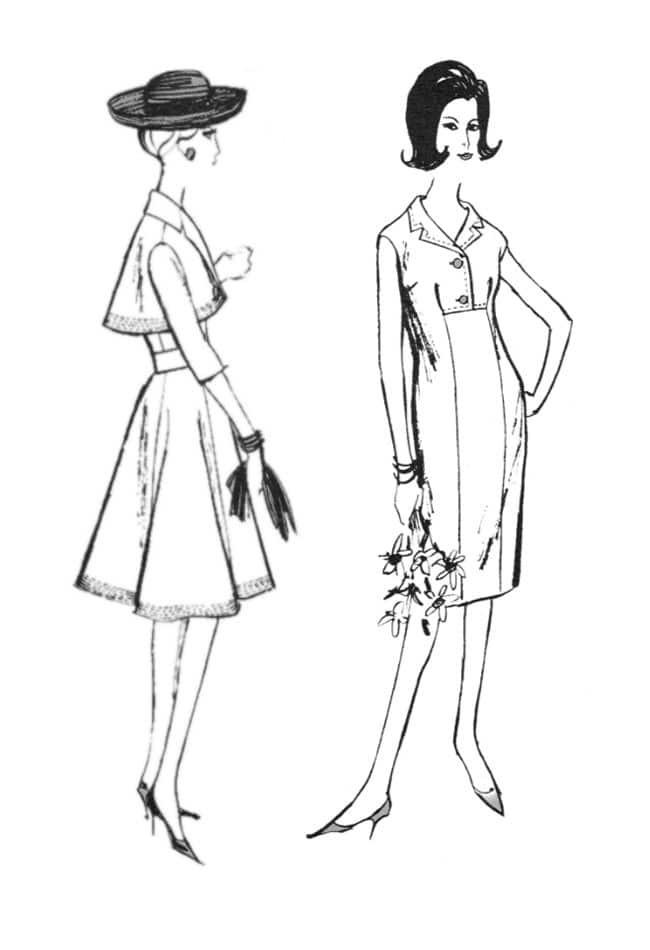
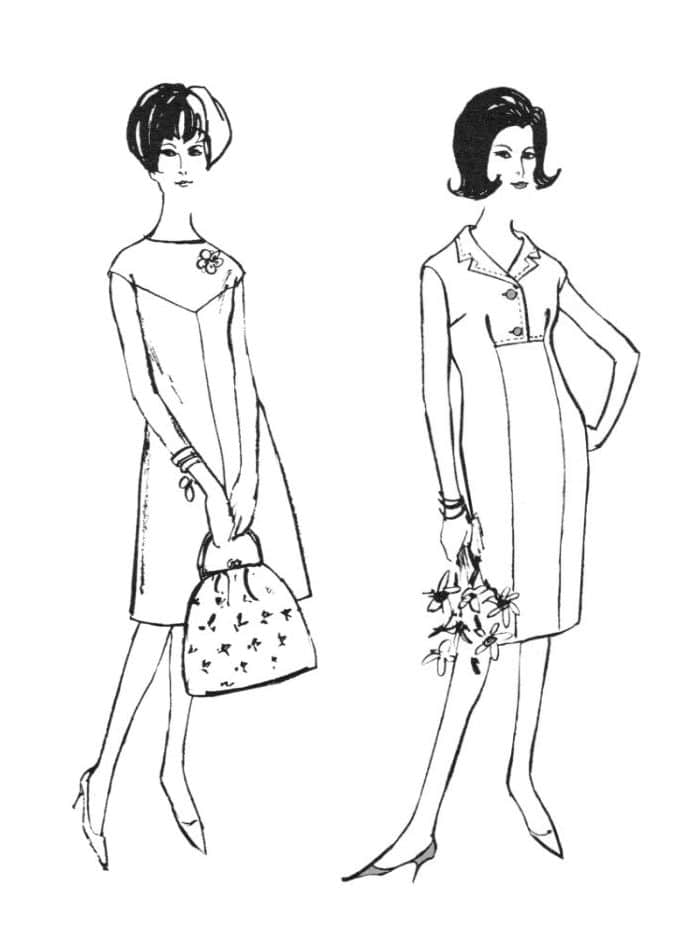

Princess seamlined clothes gradually introduced more volume into skirts without gathering at the waist. Often they were teamed with empire line short bolero jackets. Note the little brooches, clutch bags, hats and gloves. Hairstyles were still full, but sleeker, with flick ups a new feature that with variations remained in fashion for many years.
Popular coat styles included loose duster and swagger coats. Later Princess line coats were just as popular. When focus was away from the waist it was often on the bustline as an empire bodice seam or a seamed yoke line.
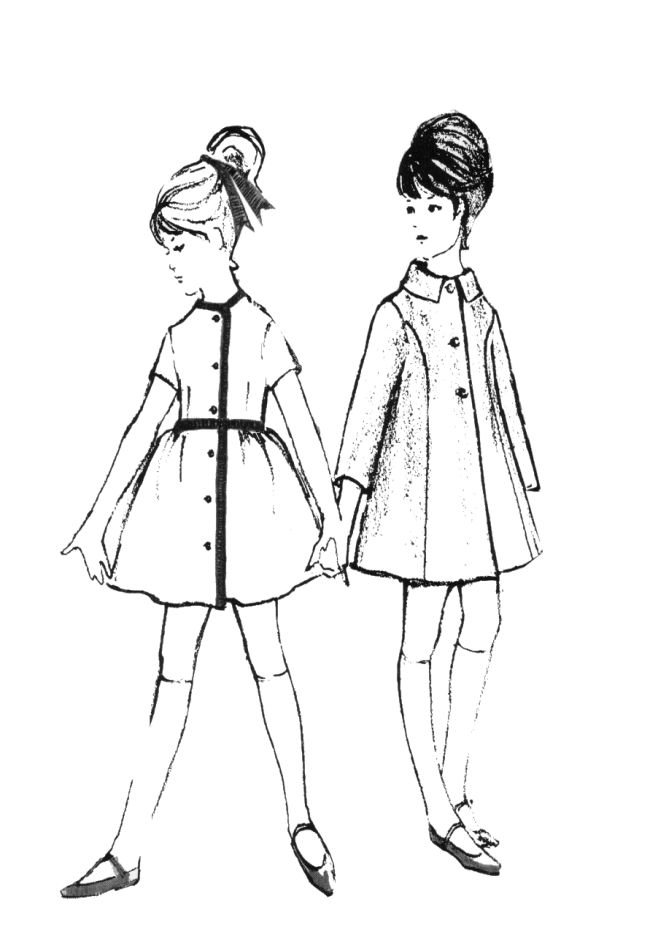
Children's clothes had much shorter skirts and soon adult clothing followed 'childlike' pubescent styles.
Fashion Sewing in the 1960s
Fashion sewing was very popular during the early sixties and was a major subject in secondary modern schools in the UK. There, female pupils often had two half day sessions of dressmaking and needlecrafts a week. Most young girls with a secondary modern education in UK left school at 15 with good craft sewing skills. Many were easily able to make dresses that fitted closely to the body and had fully lined bodices or slips.
Those who went to Grammar Schools were less fortunate in acquiring textile arts mastery. They usually had to choose between Art, Domestic Science (Cookery) or perhaps Geography or Housecraft by their third year in school. So for most girls by the time they chose a selection of examination subjects these creative subjects were effectively squeezed out by the Grammar School curriculum.
The choices set against curriculum subjects were such that most academic girls felt obliged to opt for qualifications that would help them get jobs or college entry.
Even so, Local Authority night classes abounded in the 1960s. Dressmaking was a very popular subject course to follow and most women could manage to make a dress if they attended for about 10 sessions. Once they had the rudiments of using a sewing machine and cutting a pattern many continued to learn by teaching themselves.
In the 1960s instructions in sewing patterns were very detailed and far superior to any patterns available today.
Patterns often contained 4 or 5 instruction sheets, but the difference between them today is that those sheets would all be in just English or English and French. Now you may get several pages, but in many languages so the actual sewing construction details are cut out.
